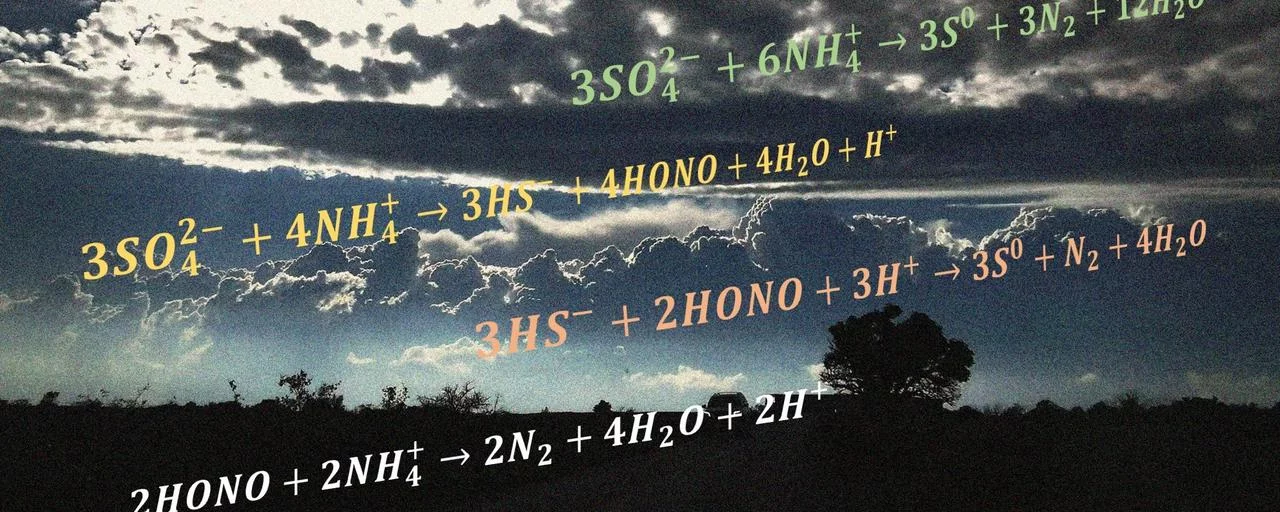A surface-promoted sulfate-reducing ammonium oxidation reaction was discovered to spontaneously take place on common inorganic aerosol surfaces undergoing solvation. Several key intermediate species—including elemental sulfur (S0), bisulfide (HS−), nitrous acid (HONO), and aqueous ammonia [NH3(aq)]—were identified as reaction components associated with the solvation process. Depth profiles of relative species abundance showed the surface propensity of key species. The species assignments and depth profile features were supported by classical and first-principles molecular dynamics calculations, and a detailed mechanism was proposed to describe the processes that led to unexpected products during salt solvation. This discovery revealed chemistry that is distinctly linked to a solvating surface and has great potential to illuminate current puzzles within heterogeneous chemistry.

